Flowers, with their captivating beauty and diverse features, have always held a special place in the hearts of gardeners, florists, and nature enthusiasts. The world of flora is teeming with an astonishing variety of species, hybrids, and cultivars, making it a delightful challenge to explore them all. In this comprehensive guide, we invite you to embark on a journey through the realm of 30 flowers that start with ” B “.
1. Baby Blue Eyes
Botanical Name: Nemophila menziesii Flowers
Native Range: Wyoming, Oregon, California, Nevada, and northwestern Mexico
Flowering Season: Late winter to early summer
Baby Blue Eyes, as the name suggests, are annual wildflowers that grace us with their delicate, powder-blue petals. These enchanting flowers, with five petals encircling a pastel yellow center, stand at a modest height of 30 cm. They have a fondness for meadows, woodlands, and the serene banks of streams. The very name Nemophila harks back to its love for wooded pastures, originating from the Greek words ‘nemos’ (wooded pasture) and ‘phileos’ (to love).
2. Bachelor’s Button

Botanical Name: Centaurea cyanus
Native Range: Albania, Bulgaria, East Aegean Islands, Greece, Italy, Lebanon, Romania, Sicilia, Syria, Turkey, and Yugoslavia
Flowering Season: Late spring to early summer
Bachelor’s Button, with its regal stature ranging from 40 to 90 centimeters, presents us with crown-like flowerheads adorned with tiny, vibrant-blue blooms that radiate outward from a central point. Also known as cornflowers, these beauties are reminiscent of Victorian times when single men would don them, symbolizing celibacy and single blessedness according to the language of flowers.
3. Balsam
Botanical Name: Impatiens balsamina
Native Range: India and Sri Lanka
Flowering Season: Late spring until the first frost
Balsam, with its succulent-like stems that can grow up to 50-90 cm tall, offers cup-shaped flowers in a mesmerizing array of colors – pink, red, purple, white, and bicolor variations. In the floral lexicon, red balsam signifies “touch me not” and impatient resolve, while yellow balsam symbolizes impatience.
4. Barberton Daisy
Botanical Name: Gerbera jamesonii
Native Range: Swaziland and the Northern Provinces of South Africa
Flowering Season: Late spring through fall
Barberton daisies are flowers that start with B and are plants that have big, colorful, and beautiful flowers. They grow on stems that can be very tall, up to 75 cm. They have many colors, like pink, orange, yellow, and red. They look like daisies, but they are different. They mean happiness, friendship, warmth, purity, innocence, and true love.
5. Basketflower
Botanical Name: Plectocephalus americanus (aka Centaurea americana)
Native Range: Arizona, Arkansas, Kansas, Louisiana, Missouri, Oklahoma, and Texas, in addition to northwestern, northeastern, and southwestern Mexico
Flowering Season: Late spring to early summer
Basketflowers derive their moniker from the distinctive pattern adorning their flower buds and the undersides of their flower heads, reminiscent of woven baskets. These robust plants reach towering heights of about six feet, boasting four-inch-wide, fuzzy, thistle-like flowers with light pink petals and creamy white centers.
6. Begonia
Botanical Name: Begonia
Native Range: The moist, tropical, and subtropical climates around the world
Flowering Season: Varies by species: generally, early summer until the first frost
Begonia, a genus comprising a staggering 2,053 accepted species, offers a wide range of options for plant enthusiasts. Some begonias enthrall with their exquisite foliage, while others captivate with stunning floral displays. In the language of flowers, begonia carries a message of caution – “beware.”
7. Bellflower
Botanical Name: Campanula
Native Range: The Northern Hemisphere’s subtropical and temperate regions
Flowering Season: Late spring through summer
Bellflowers, with their 448 accepted species, derive their common name from the bell-like shape of their blossoms, which may appear in various shades including blue, purple, pink, or white. These elegant flowers convey either constancy when pyramidal or growing on racemes, or gratitude when small and white, depending on their specific variety.
8. Bitter Melon Flower
Botanical Name: Momordica charantia
Native Range: Africa (except the northern and southern-most regions), southern Asia, Papua New Guinea, the Pacific Islands, and Australia
Flowering Season: Late spring to early summer
Bitter melon, known for its unique fruits, also presents us with pretty and delicate yellow flowers. The vine is a valuable food source in regions where it thrives, and its fruits vary significantly in bitterness and shape between varieties.
9. Bitterroot
Botanical Name: Lewisia rediviva
Native Range: Alberta, British Columbia, Arizona, California, Colorado, Idaho, Montana, Nevada, Oregon, Utah, Washington, and Wyoming
Flowering Season: May and June
Bitterroot is a flower that starts with B and is a plant that grows close to the ground. It has small, white, pink, or purple flowers that look like stars. It is a strong plant that can live in dry places. People who lived in America long ago ate its roots for food, and a famous explorer, Meriwether Lewis, saw this plant and gave it its name. Bitterroot can come back to life even after a year without water, so people call it the “resurrection flower.”
10. Black Hollyhock
Botanical Name: Alcea rosea
Native Range: Turkey
Flowering Season: Late spring to late summer
Black hollyhocks, with their tall, erect stems and large racemes of flowers, make a dramatic statement in any garden. Varieties such as ‘Jet Black,’ ‘Nigra,’ and ‘Blacknight’ are popular choices. While hollyhocks generally symbolize ambition and the circle of life, the rare black color can convey farewells, mystery, and power.
11. Black Locust
Botanical Name: Robinia pseudoacacia
Native Range: Alabama, Georgia, Illinois, Kentucky, Maryland, Pennsylvania, Tennessee, and Vermont
Flowering Season: Late April to Early June
The black locust, a hardwood deciduous tree, can tower up to 100 feet in height and boasts blue-green foliage. Its large, fragrant, white flowers resemble orange blossoms. Known for spreading rapidly and enduring drought, these trees symbolize endurance and strength.
12. Black-Eyed Susan
Botanical Name: Rudbeckia hirta
Native Range: Southern Canada and most of the United States (except Arizona, Montana, and Nevada)
Flowering Season: June to August
Black-eyed Susans, with their golden-yellow, daisy-like flowers centered around fuzzy, cone-shaped, black centers, are ubiquitous across the United States. These cheerful blooms symbolize encouragement, motivation, and justice.
13. Blanket Flower
Botanical Name: Gaillardia
Native Range: Most of North America and Southeastern South America
Flowering Season: Summer
Blanket flowers, belonging to the Gaillardia genus, are renowned for their breathtaking petals, which showcase a gradient of colors – yellows, oranges, reds, pinks, and purples – reminiscent of a vibrant sunset. These striking flowers encircle prominent, dark, fuzzy centers and symbolize happiness, charm, and modesty.
14. Bleeding Heart
Botanical Name: Lamprocapnos spectabilis (aka Dicentra spectabilis)
Native Range: Korea and Manchuria
Flowering Season: Mid-spring to early summer
Bleeding hearts is a flower that starts with B and is a plant that looks like a bush. It has flowers that hang down and are shaped like hearts. They are pink or red in color. They make people think of sad love stories. But they also mean caring and speaking freely..
15. Bletilla Orchid
Botanical Name: Bletilla
Native Range: Southeastern Asia, Japan, and Korea
Flowering Season: Spring
Bletilla orchids, often referred to as urn orchids, unveil their butterfly-like petals in hues of pink, purple, and white. The Bletilla striata, commonly known as the hardy orchid or Chinese ground orchid, is a beloved species. These enchanting orchids can be found in garden stores and floral shops, captivating enthusiasts with their elegance.
16. Blue Columbine
Botanical Name: Aquilegia coerulea
Native Range: Arizona, Colorado, Idaho, Montana, Nevada, New Mexico, Utah, and Wyoming
Flowering Season: Late spring to early summer
Colorado’s state flower, the blue columbine, boasts unique flowers with bright-yellow stamens at their center, encircled by five round petals and further adorned by five prominent oval-shaped sepals. These petals and sepals come in various contrasting colors, including shades of blue, pink, yellow, and white.
17. Blue Clematis
Botanical Name: Clematis
Native Range: Native to most countries and regions of the world
Flowering Season: Late spring to early summer or early spring and early fall, depending on the species
Clematis, with its 384 accepted flowering plant species, offers a variety of blue-hued blooms. Some popular varieties include Clematis durandii, ‘Sugar Sweet Blue,’ and ‘Gabrielle.’ Clematis symbolizes mental beauty, making it a representation of mental ingenuity and artistry.
18. Blue Fescue
Botanical Name: Festuca glauca
Native Range: France, Italy, Spain, and Switzerland
Flowering Season: Early to midsummer
Blue fescue, a flowering grass species, forms domed clumps of bluish-gray, blade-shaped foliage. Tall, slender stems emerge from these clumps during blooming season, bearing feathering racemes of flowers in a pale green shade that matures to buff tan.
19. Blue Flax
Botanical Name: Linum lewisii
Native Range: West and central North America from Nunavut, Canada in the north to northern Mexico in the south
Flowering Season: Late spring to midsummer
Blue flax is a flower that starts with B and is a plant that lives for many years. It grows by itself in many places in North America. It has thin stems and round, blue flowers with five petals. The name of the flower, ‘lewisii,’ is from the name of a famous explorer, Meriwether Lewis. The flower means destiny, home problems, and kindness.
20. Blue Grass
Botanical Name: Poa
Native Range: Native to most regions of the world
Flowering Season: Spring through summer
Poa, a genus with 573 accepted species of grasses, includes many varieties referred to as blue grass. These grasses thrive in diverse climates, from coastal areas and swamps to arid meadows. Kentucky bluegrass (Poa pratensis) is one of the most recognized species. Although not native to North America, it was introduced by Spanish explorers.
21. Blue Lupine
Botanical Name: Lupinus polyphyllus
Native Range: Alberta, British Columbia, Ontario, and Québec, in Canada, in addition to California, Connecticut, Idaho, Maine, Massachusetts, Minnesota, Montana, Nevada, New York, Oregon, Vermont, Washington, and Wisconsin in the United States
Flowering Season: Late spring through early summer
Lupinus polyphyllus, one of over 600 lupine species, stands tall at nearly five feet and offers striking cone-shaped racemes of vibrant blue flowers. Bumblebees are particularly drawn to these blossoms, which symbolize imagination and voraciousness in the language of flowers.
22. Blue Mistflower
Botanical Name: Conoclinium coelestinum
Native Range: The eastern United States and Ontario
Flowering Season: Late summer until the first frost
Blue mistflower is a flower that starts with B and grows in the wild in the east of the United States and Canada. It is a tall plant, about three feet high. It has green leaves that are shaped like triangles and blue flowers that are flat on top. The flowers are small and round and look like mist from far away. They attract bees and butterflies with their color. The name of the flower, ‘coelestinum,’ means sky-blue.
23. Bluecrown Passion Flower
Botanical Name: Passiflora caerulea
Native Range: South America, Central America, and Mexico
Flowering Season: Summer
The Bluecrown Passion Flower, scientifically known as Passiflora caerulea, hails from South America, Central America, and Mexico. Its striking blue blossoms are a true spectacle, symbolizing imagination and voraciousness in the language of flowers.
24. Blue Star
Botanical Name: Amsonia
Native Range: North America and East Asia
Flowering Season: Spring to early summer
Blue Star, a delightful native of North America and East Asia, enchants with its clusters of star-shaped, azure flowers. The Amsonia genus encompasses several species, each showcasing its unique charm. These blooms symbolize lasting beauty and grace.
25. Blue Thistle
Botanical Name: Eryngium
Native Range: Europe and Asia
Flowering Season: Summer
Blue thistle is a flower that starts with B and has a different name, sea holly. It has a special shape like a spike and a color like metal. It is a strong plant that grows in Europe and Asia. It is famous for its toughness and beauty. Blue thistle means respect and freedom.
26. Borage
Botanical Name: Borago officinalis
Native Range: Mediterranean region and Asia Minor
Flowering Season: Late spring to early summer
Borage, an annual herb, boasts striking blue star-shaped flowers that delight both the eyes and the palate. The Mediterranean region and Asia Minor are its native abodes. Borage carries messages of courage, joy, and happiness in the language of flowers.
27. Bottlebrush
Botanical Name: Callistemon
Native Range: Australia and nearby regions
Flowering Season: Spring to early summer
Bottlebrush is a flower that starts with B and grows in Australia and nearby places. It has a special shape like a bottlebrush and comes in bright red or pink colors. It draws pollinators easily with its fuzzy flowers. Bottlebrush means new beginnings and flexibility.
28. Buttercup
Botanical Name: Ranunculus
Native Range: Worldwide
Flowering Season: Spring to early summer
Buttercups, with their golden-yellow petals that seem to glow with sunlight, are widespread across the globe. The Ranunculus genus boasts a diverse array of species, each showcasing its unique charm. Buttercups symbolize charm, attractiveness, and radiant beauty.
29. Blue Orchid
Botanical Name: Orchidaceae
Native Range: Worldwide
Flowering Season: Varies by species
Orchids, with their intricate and exotic beauty, are renowned worldwide. Among them, blue orchids stand out with their unique elegance. The Orchidaceae family encompasses numerous species, each with its own enchanting allure. Blue orchids symbolize rarity, luxury, and mystery.
30. Blue Ginger
Botanical Name: Dichorisandra thyrsiflora
Native Range: Brazil
Flowering Season: Summer
Blue ginger, native to Brazil, captivates with its mesmerizing cobalt-blue inflorescences. This tropical beauty is perfect for adding a touch of elegance to gardens and indoor spaces. Blue ginger represents protection and self-assurance.
Flowers and plants that start with B include many different species, each with its own beauty and meaning. They can convey various emotions like peace, grace, strength, or happiness. You can pick a flower or plant that starts with B to suit your feeling and enhance your garden or bouquet.





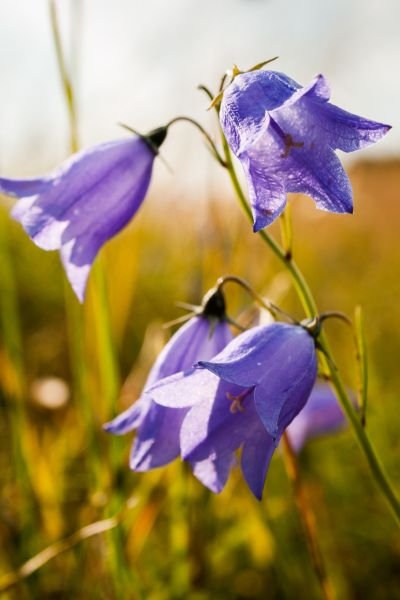






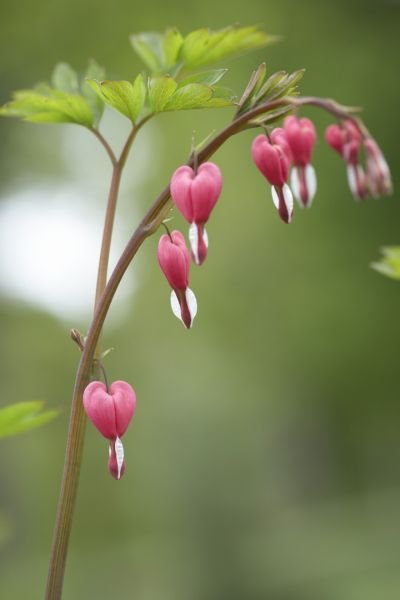












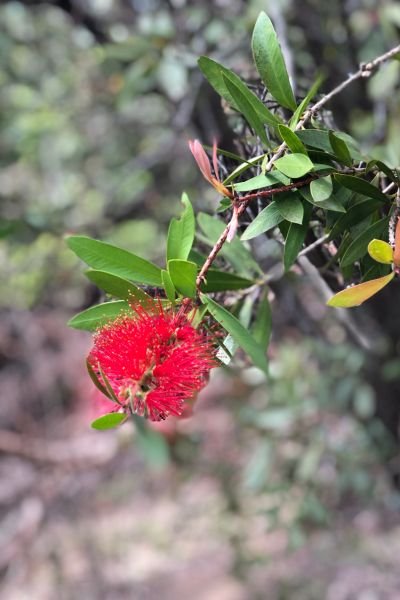
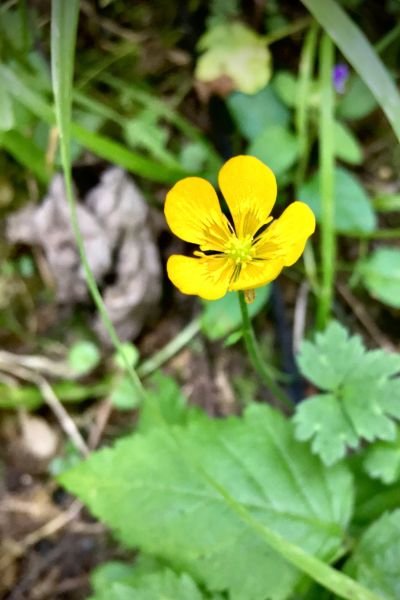
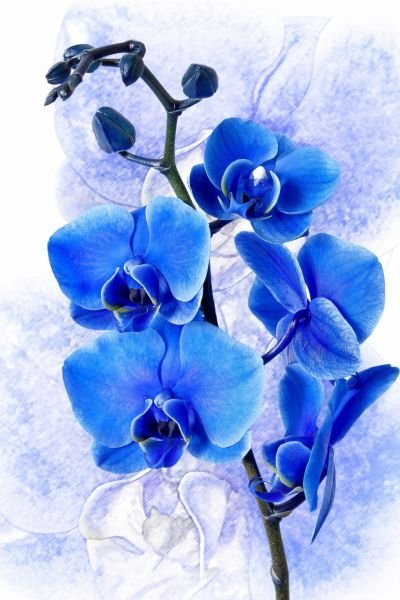

Pingback: Flowers That Look Like Vaginas: Nature’s Unique Marvels
Pingback: 13 Purple Orchids Varieties For Your Gardens
Pingback: 20 Beautiful Flowers That Start With C -
Pingback: Elatior Begonia : Care Tips and Growing Techniques
Pingback: Growing and Caring for Ranunculus Flowers